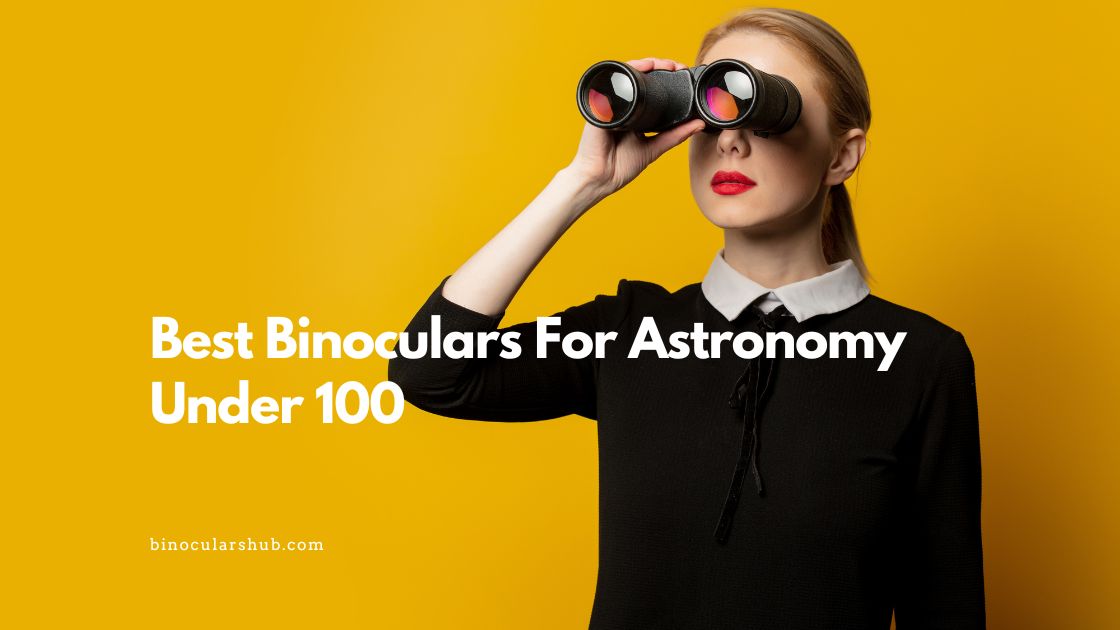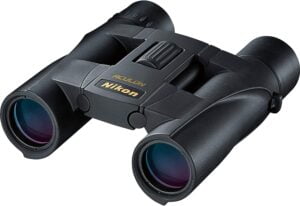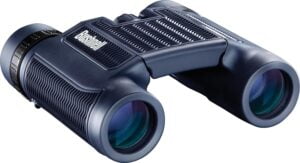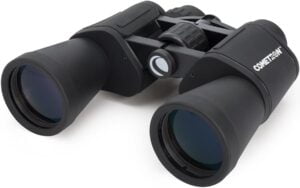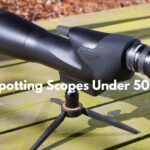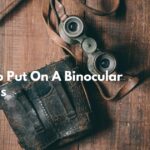Are you an amateur astronomer on a budget looking for the best binoculars for astronomy to help you observe and explore the night sky? Look no further! We’ve done all the research so that you don’t have to.
In this article, we will provide an overview of some of the best value binoculars Whether it be stargazing or bird watching, these powerful yet affordable astronomy binoculars are sure to satisfy your needs. So read on as we take a closer look at what makes each pair special and how they can enhance your viewing experience.
Best Overall: Nikon ACULON A30 10X25
⇣ Jump to ReviewBest On Amazon: Bushnell H2O Waterproof/Fogproof Compact Roof Prism Binocular
⇣ Jump to ReviewBest For Beginners: Celestron – Cometron 7×50 Binoculars
⇣ Jump to ReviewEssential Features:
When selecting binocular for astronomy, here is a list of the main features you need to focus on before making your final choice.
1. Magnification
When using binoculars, it is typically done by hand. For this reason, having high magnification can turn out to be a problem because your arms/hands are unable to remain steady for long periods of time which make it difficult to locate objects in the field.
The first number on any pair of binocular specifications such as 7×50 or 8×42 indicates the amount of magnification; in this example 7x or 8x respectively.
Most kids can handle 8x binoculars, while their adult counterparts are able to utilize 10-11x magnification. Some individuals may be capable of utilizing even higher magnifications (12, 15, or 16), however, it is a difficult task to keep those lenses steady for clear viewing.
During the daytime when things we observe tend to be near the horizon, and brighter/more recognizable; you should have no problem with increasing your magnification past 11x as long as you’re not hoping for crystal clear images every single time.
2. Aperture
In binoculars, the second numerical value indicates the aperture of its lenses in millimeters – 42mm, 50mm, and 63mm are some common examples.
When it comes to astronomical viewing, a larger aperture provides greater light-gathering power. For adult viewers, I find that 42mm is the minimum size; 35mm will do as well, but for optimal results, you should go with 44mm or higher.
Anything smaller than 35m may be suitable for birdwatching and sports watch, though not so much for astronomy.
On the contrary, binoculars that are too large can be difficult to keep stable. Although 150mm (6”) objective lens models exist on the market today, anything above 100mm tends to become more like a telescope than binoculars in terms of features and price tag.
When it comes to star-gazing hand-held binoculars, a 63mm aperture is the highest recommended size. Some people do manage to use 10x or 11×70 for handheld purposes but this can prove difficult and tiring over time. It’s best to invest in a tripod if you plan on using larger binoculars for extended periods of time.
3. Prisms
If you’re searching for the highest quality binoculars, it’s important to look for BAK-4 or similar optical glass. Binoculars containing BK-7 (soda-lime glass) prisms will often have blurrier images and may appear dimmer than their counterparts.
4. Coatings
Quality optical coatings are essential for ensuring the light is not lost or reflected off of lenses and prisms.
Coating your optics with a single layer of anti-reflection coating, such as magnesium fluoride, is referred to as coated. Multi-coated implies that at least one optical surface has been treated with an advanced multi-layer coating while some surfaces may have simple coatings or none whatsoever.
On the other hand, fully multi-coated means all optical surfaces are equipped with superior multi-coatings in order to ensure optimal light transmission. For best results when investing in binoculars, seek out those that come fully multi-coated for maximum performance and value.
5. Focusing
For optimum ease of focus, search for binoculars that offer center-focusing and diopters. Steer clear from “instant-focus” and “perma-focus” models as these are simply manufacturers’ shortcuts to save money – but more often than not lead to fuzzy views.
Best Binoculars For Astronomy Under 100 Reviewed In This Guide
Nikon ACULON A30 10X25
The Nikon ACULON A30 10×25 binoculars are designed for outdoor enthusiasts looking for an affordable, portable, and ergonomic option.
These versatile binoculars boast multicoated lenses, providing enhanced brightness and sharpness with a lighter-weight glass composition that is free from lead and arsenic.
With its lightweight design, the ACULON A30 weighs in at under 10 ounces making them easy to carry around on any adventure. If you’re looking for the best value binoculars or the best astronomy binoculars under 100 then the Nikon ACULON A30 10×25 should be your top pick.
Bushnell H2O Waterproof/Fogproof Compact Roof Prism Binocular
Bushnell H2O Waterproof/Fog-Proof Compact Binoculars are the perfect choice for any outdoor enthusiast looking to explore nature in wet conditions.
Featuring multi-coated optics and premium BaK-4 prisms, these binoculars deliver clear, bright images while being O-ring sealed and nitrogen purged to ensure waterproof and fog-proof performance.
The large center focus knob allows you to sharpen image quality with a single turn, while twist-up eyecups allow comfortable viewing even for those wearing glasses.
Celestron – Cometron 7×50 Binoculars
Celestron’s Cometron 7×50 Binoculars are the perfect choice for beginning astronomers. They feature 7x magnification and multi-coated 50mm objective lenses that gather more light providing crisp, detailed images with increased resolution and contrast.
The rubber-armored housing is durable and water resistant, giving you true piece of mind no matter what conditions arise so you can stay focused on the night sky.
Best of all, your purchase comes with a stellar warranty from Celestron – a leading optics brand in California since 1960 – plus US-based expert tech support if you need it.
Types of Binoculars For Astronomy
Roof prism binoculars
Binoculars with a roof prism are incredibly space-saving due to the lenses and prisms being placed directly behind one another. Not only that, but you focus by adjusting the lenses instead of rotating the eyepiece – making them far less prone to dirt and moisture entering inside. This ensures lasting performance even in challenging climates or environments.
Porro prism
Porro prism binoculars possess a unique N-shaped bend that separates the lens from its eyepiece, creating greater width for their housing.
This type of design is advantageous in producing an intensified depth perception; however, one potential downside can be the requirement to adjust sharpness by moving the eyepiece itself – while this facilitates convenience and accuracy, it also increases susceptibility to external moisture and dust contamination.
Common Questions About The Best Binoculars For Astronomy
What can you see with astronomy binoculara?
For a better appreciation of certain celestial objects, handheld binoculars offer the perfect frame. Countless star patterns such as Kemble’s Cascade and the Leaping Minnow fit perfectly in this field of view, along with grand open clusters like the Pleiades or Beehive Cluster.
Surprisingly, you can observe objects as dim as the Triangulum Galaxy and North America Nebula with 10×50 binoculars more clearly than with expensive amateur telescopes. Binoculars can also be a great way to experience the splendor of the moon.
What is the best binocular size for astronomy?
When it comes to astronomy, three different sizes of binoculars are optimal: 15×56, 12×50, and 7×42. Not only can you take in the beauty of the Moon through these pairs but with lenses no smaller than 30mm – 40-50mm being ideal – you’ll be able to explore much more.
What is essential in binoculars for astronomy?
Mainly, you need binoculars with night vision. When selecting a pair of night vision binoculars, make sure they have an exit pupil of at least 5 millimeters.
This opening is where the light passes through and into your own eyes – it’s vital that enough brightness filters in for you to be able to see clearly from far away. Infrared LED lights may also help aid visibility when using image-intensifying and infrared binoculars during nighttime hours.
Can you see planets with 10×50 binoculars?
With the 10×35 binoculars, it will be a nice experience. But if you have one of those 10×50 ones, your planetary observation would become even brighter and more stunning.
To relive what Sir Herschel must have felt while viewing the distant stars in the night sky through his telescope with a 3-inch lens or mirror, use an eyepiece that provides up to 100x magnification power; then you can witness these planets as small discs unlike any star out there.
Can you see Saturn’s rings with binoculars?
Indeed, you can observe Saturn’s rings through the best astronomy binocular; however, for a clearer view of the planet and its rings, look for 40x magnification or higher. While this may offer better visibility of the celestial body and its encircling particles, don’t expect to witness any intricate details.
Video Review: Best Astronomy Binoculars 2023
Check out in the video below some of the best astronomy binoculars currently available in the market now.
Final Thoughts
Choosing binoculars can be a bit of a challenge. There are a lot of factors to consider, such as magnification power, objective lens size, and field of view. With this in mind, you can be sure that your next purchase will have everything you need to explore galaxies far away without breaking the bank.

